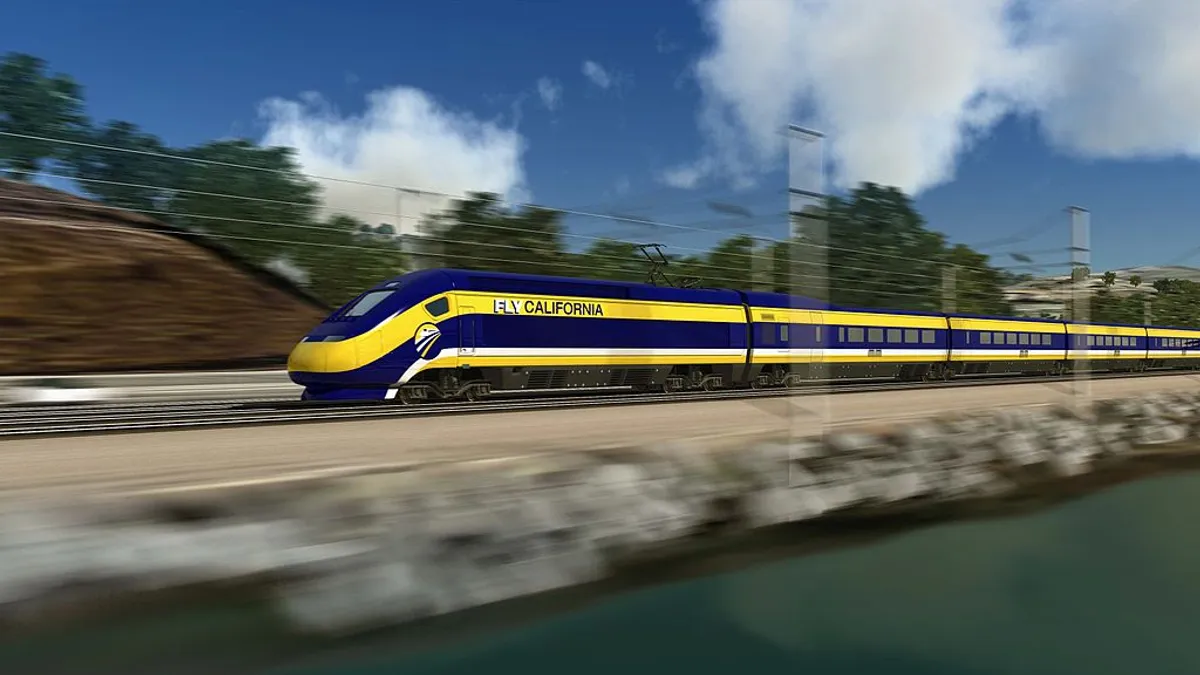Dive Brief:
- The California High Speed Rail Authority has approved a $3.2 billion bond sale to help fund construction of one stretch of its bullet train route and the electrification of another, according to the Mercury News.
- The state spend, which will come from $10 billion in voter-approved financing, is necessary so that the rail project can continue to be eligible for matching federal funds.
- Opponents have filed a lawsuit alleging that the conditions of the original high-speed rail bonds did not authorize money to be spent on electrification and that a state bill passed last year "materially changing" the bond is unconstitutional.
Dive Insight:
The attorney who filed the lawsuit said that only voters can amend the original 2008 bonds to permit funding of the system’s electrification, despite Gov. Jerry Brown signing off on legislation allowing just that. Rail officials said that aside from the federal matching funds requirement, the rail project needs the money to be able to maintain the construction push now underway.
The authority said it will cost to almost $8 billion to build an electrified line and to test trains on it at speeds of more than 200 mph. The rail project also took a step toward its operational phase by authorizing the issuance of a "request for qualifications" notice for companies interested in advising the authority on early train operations and testing.
This is just the latest event in the saga of the California bullet train, which has faced litigation, cost overruns, system changes and even speculation about the honesty of authority members in how they presented the project to the public prior to the authorization vote. Perhaps the chaos around the initiative is to be expected, however, as this is the first high-speed train project in the U.S. that has made it past the drawing board.
Even so, likely in anticipation of more rail development in the near future, the Federal Railroad Administration proposed a series of national safety regulations last month specifically for high-speed systems operating up to 220 mph. Current regulations address trains operating at speeds below 150 mph. Some in the rail industry said that this new clarity on behalf of the FRA could help spur development in the U.S., as established rules would speed up an approval process bogged down in bureaucracy.












